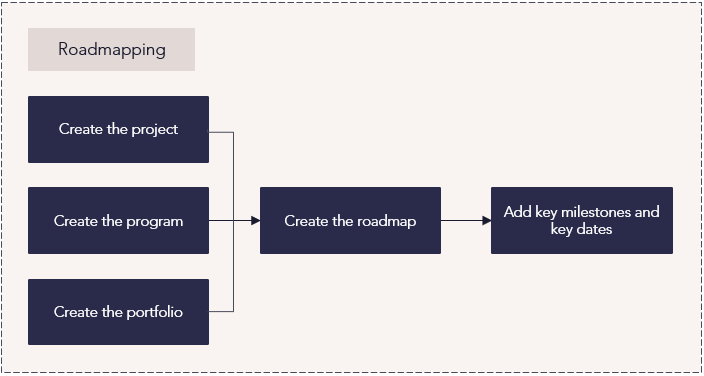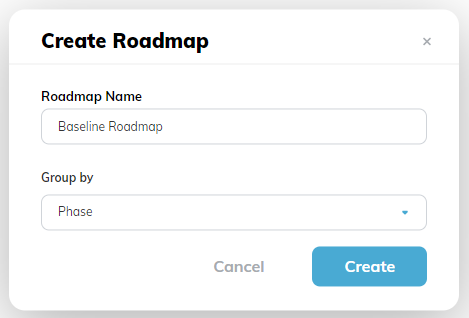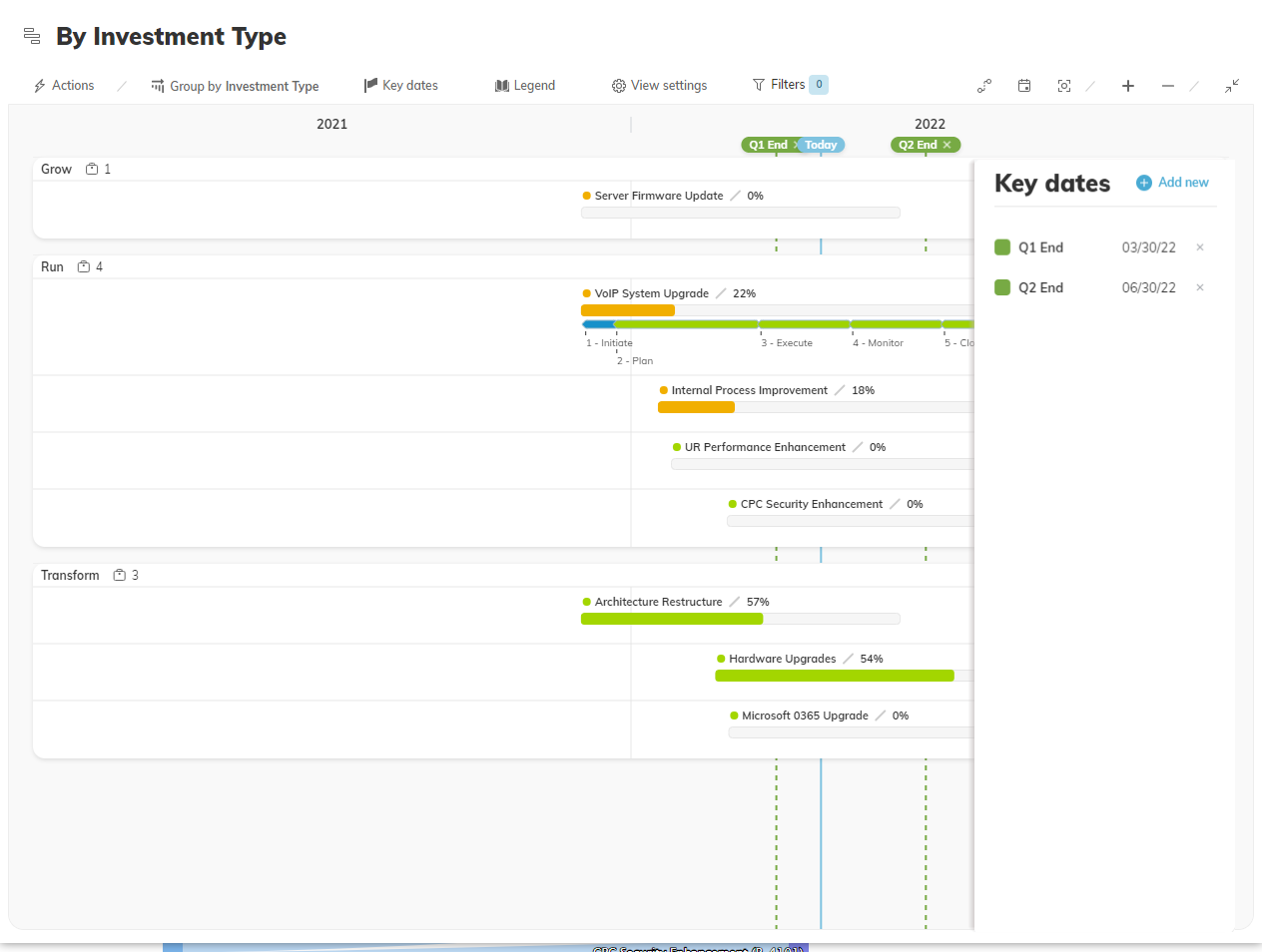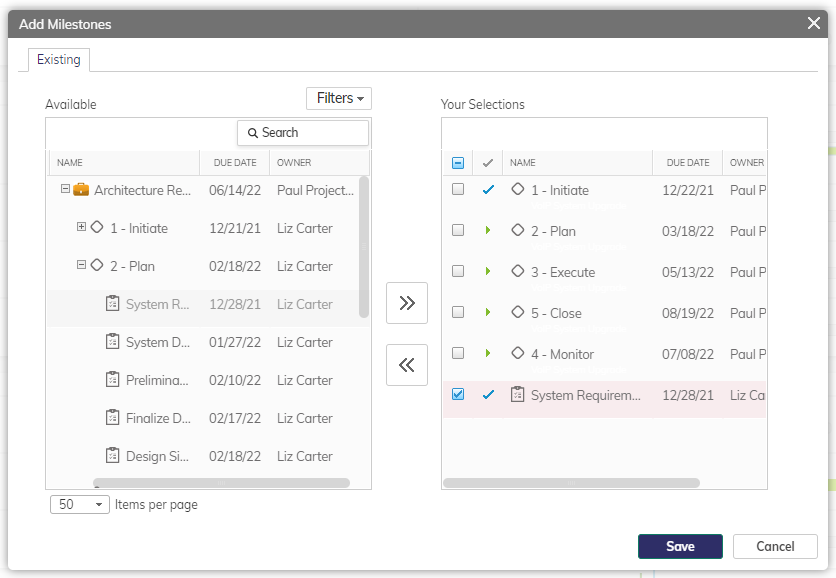AdaptiveWork process flows
Overview
The roadmapping capability allows business leaders to communicate their strategic programs and business outcomes to stakeholders through a visual timeline of deliverables and milestones. Roadmaps can be reviewed, evaluated, and updated based on changes in planning and delivery activities, and shared with stakeholders for collaboration.
Process steps

| Process step | Description |
|---|---|
| Create the project |
Roadmaps exist on project, programs, and portfolios, and provide managers and executives with an interactive visualization tool to review and assess their strategies |
| Create the program | Create the program. |
| Create the portfolio |
The portfolio roadmap can group related projects by a selected criteria – such as product name – for the review and approval process. |
| Create the roadmap |
Create the roadmap from the Roadmap panel for projects, programs, or portfolios. Enter in the name and grouping, if desired. For more information: |
| Add key milestones and key dates |
For projects and programs, interact with the roadmap to see project or program information by hovering over a project or clicking on a project bar, add key dates, and adjust settings as needed. The roadmap may be filtered to only show the level of information needed, manually scaled, and cross-project dependencies may also be displayed to help provide the full picture. For portfolios, add key milestones, key dates, and adjust settings as needed. As projects are added or removed from the portfolio, the roadmap will be updated automatically. It can also be manually refreshed using the refresh action in the three-dot menu. |
Best practices
Ensure the right people have access
Ensure that all stakeholders involved in the roadmap deliverables and outcomes have access to your roadmap so they can view up-to-date changes and align across all levels of the organization. This will help you break down silos during the planning process, and bring together the right expertise across business units, teams, and geographies.
Review your roadmap regularly
Review your roadmap on an ongoing basis (such as quarterly) and maintain an adaptive and responsive mindset as you learn new information or receive customer feedback. Reassess, adapt, and communicate changes to stakeholders as your roadmap evolves – but to maintain stakeholder confidence in your strategic decision-making process, avoid continuously updating or never updating your roadmap.
Tailor the level of detail
To gain stakeholder buy-in, your roadmap should have just enough detail to communicate the strategic vision, but not so much that it overwhelms viewers. Tailor the level of detail on your roadmap to your audience. For example, a portfolio roadmap for executives may have a monthly or quarterly planning horizon that covers multiple products with very few detailed activities, whereas a development roadmap may include just one product over a shorter, two-week planning sprint, broken down into detailed development stories and tasks.
Use your roadmap as a collaboration tool
Collaboration is at the heart of every successful roadmap. Engage with stakeholders throughout the entire process. Not only does this keep them in the loop so they have a better idea of needs and expectations, but it also ensures that everyone’s priorities are aligned and that all executives and department heads are working together to achieve the same strategic business goals.





